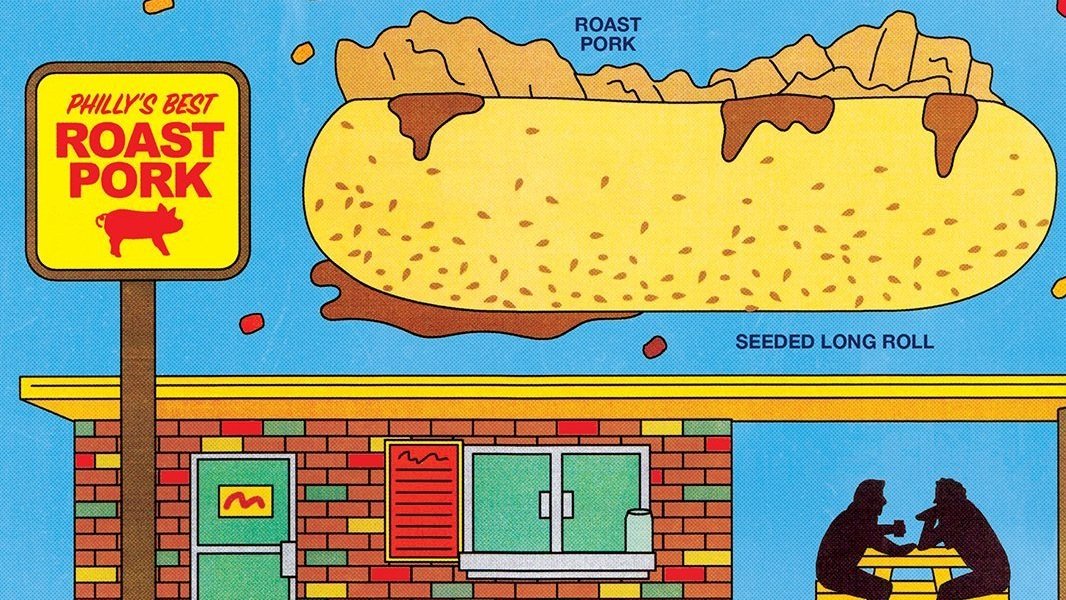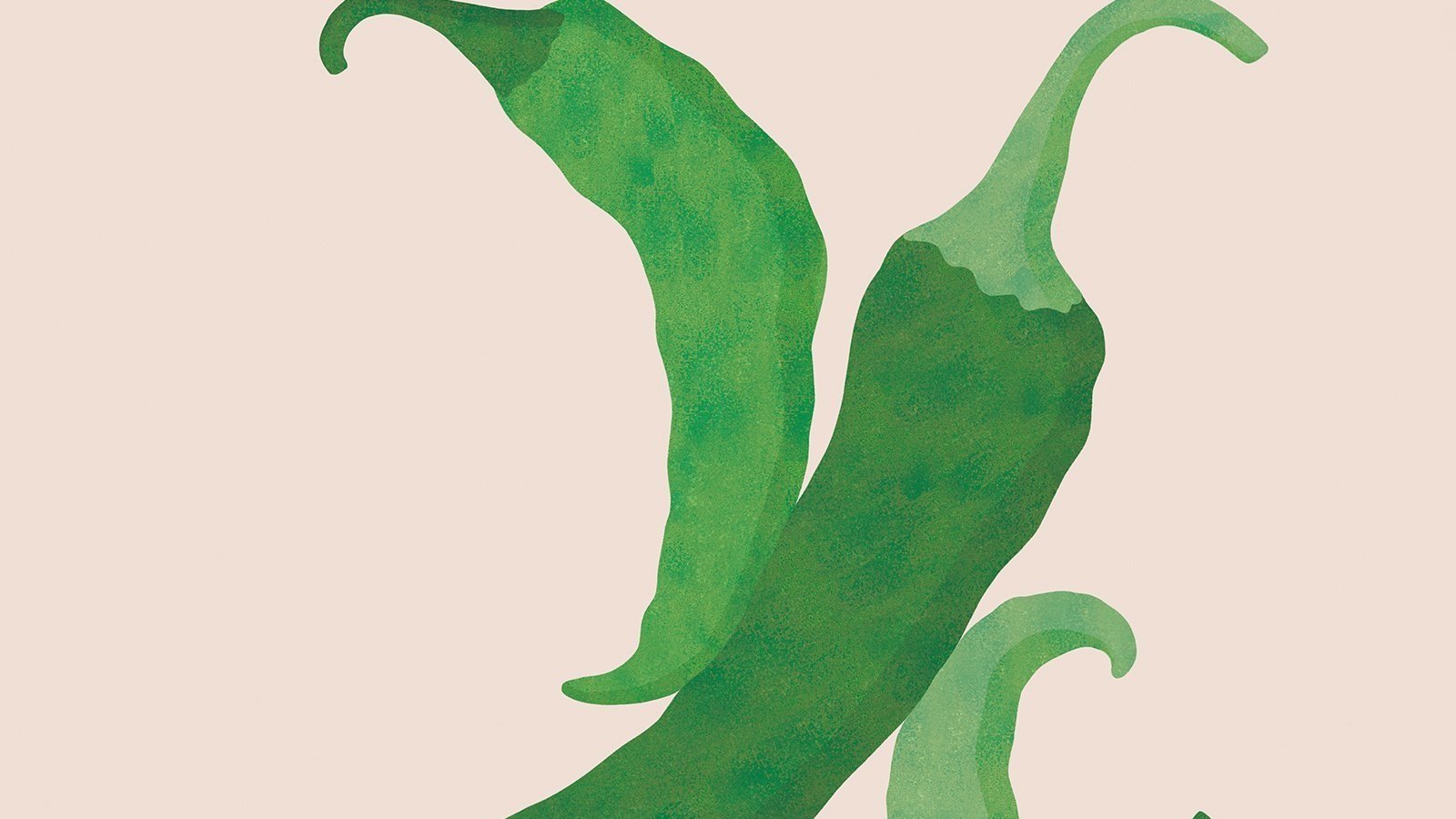Maggi Liquid Seasoning And Its Awkward Relationship With The Bánh Mì
Text by Adrian Sandiford
Photography by © Ilka & Franz
MAGGI was my first addiction. Long before coffee or cigarettes came anywhere near my lips or lungs there was Maggi Liquid Seasoning — a brown sauce introduced to me as a child in 1980s London by my Vietnamese mother, and with which I soon became obsessed. I didn’t care what was in it. I never stopped to think. I just knew that it made everything taste better. I particularly loved putting it on white rice. My mum is an amazing cook. But as soon as I spotted white rice — a boring and functional food by anyone’s standard — I’d seek out that Maggi magic. Even the bottle, with its bright yellow and red label, square base, and slender neck, seemed exciting to me. And once the rice was doused in that brown sauce: Oh boy. The grains just seemed to come alive. The sauce instantly added a richness to things while somehow managing to be sweet and salty at the same time. Some might use the term ‘umami’ as a descriptor. The child version of me loved it so much that I would often ask for an extra serving of white rice simply so I could drench things in Maggi once more.
I didn’t think about the good stuff once I left home in the 2000s. I didn’t see it in university dorm kitchens, or at dinner parties in London, and Maggi began to fade in my mind with each passing year — just another lost childhood pleasure. Around the time of my 38th birthday, in Nov 2019, some 30 years after the height of my Maggi obsession, it all came flooding back when I chanced upon the book Rice & Baguette: A History Of Food In Vietnam by Vu Hong Lien, a guest lecturer at the School of Oriental and African Studies, University of London. The section on condiments particularly hit home: “During the French century . . . many Vietnamized French dishes were accompanied by a clear brown sauce called Maggi, named after its creator, Julius Maggi of the eponymous Swiss company founded in 1872.” I read on, fascinated, as she explained how the sauce achieved instant success in 1880s Europe, as a cheap replacement for meat extract, and soon found fame in Asia. “Following in the footsteps of French colonists and visitors, it arrived in Vietnam at about the same time and was soon adopted by the middle class as an everyday condiment. It is still found on almost every Vietnamese table in and outside Vietnam.”
“Even the bottle, with its bright yellow and red label, square base, and slender neck, seemed exciting to me.”
I’d never considered the sauce’s provenance before. Or why, growing up, it was only in my Vietnamese mother’s kitchen that Maggi seemed to be a fixture, whereas my friends were more likely to wield the Worcestershire. But just as the French had taken this Swiss sauce with them to Indochina in the 1880s, my mum had brought it with her to a corner of London when leaving South Vietnam in the 1960s, and subsequently into my life two decades later. “I first had Maggi when I was at home in Saigon,” she tells me when I ask her about it after reading Rice & Baguette. “It was widely used there in well-to-do families. My memories of Maggi and Vietnam are closely connected. A personal taste rooted in my childhood is
a preference for Maggi in bánh mì. I wouldn’t like to use any other sauce.” Ah: bánh `mì. For many this sandwich is the quintessential Vietnamese dish. And for my mum it’s not a proper bánh mì without Maggi. Not if it is to stay true to her memories. Or mine.
We’re not alone in that feeling. Andrea Nguyen is a Vietnamese-born American food writer with best-selling titles such as Into The Vietnamese Kitchen and The Bánh Mì Handbook to her name. “Maggi has cult status among the Vietnamese. It’s practically synonymous with bánh mì,” she writes on her excellent Viet World Kitchen blog. Following the conversation with my Mum about Maggi and bánh mì of Vietnam’s most famous dishes. “As an import, Maggi was expensive and exotic seeming. Sophistication and relative wealth were associated with people who enjoyed it,” she explains to me from her home in California. “Maggi is what makes bánh mì sing. It’s part of the flavor of bánh mì sandwiches for me. However, a large portion of Vietnam’s current population was born after 1975 [the end of the Vietnam War] so they don’t have super strong feelings toward Maggi. When I asked a bánh mì vendor in Saigon if she used Maggi she didn’t know what I was talking about. She said she used soy sauce.”
Some weeks after that conversation I travel to Saigon to see for myself. It’s a very different city to the one my mother and Andrea Nguyen left during the 1960s and 1970s under the shadow of war. Hell, it’s completely transformed from when I first visited a decade ago. Whenever in Saigon I always make an effort to stay in the heart of District 1 at the Hotel Continental on Dong Khoi. It’s where Graham Greene lived while writing The Quiet American, but on a more personal level, the property was owned and run by my family up until the fall/liberation of Saigon in 1975. Looking out from my window the shift taking place across the city is soon apparent. Where a charming cafe once stood is now a Bottega Veneta store. The cyclo guys circling for tourists have completely disappeared from the streets. And the lotus- shaped Bitexco Financial Tower skyscraper dominates the skyline in a way that screams: “Future!” I wasn’t there to ponder the Communist Party of Vietnam’s economic reforms, however. I was there in search of Maggi.
First stop: bánh mì Huynh Hoa, which is widely considered to be the best bánh mì outlet in the city. The crowds are large, with steady throngs of tourists making their way up to the single-room store, each dutifully ordering their bánh mì and snapping their selfies for social. All I’m interested in is what sauce they use. The only staff member able to take time out to talk to me is the guy cutting cucumber, who tells me his name is Van Thanh. “I know about Maggi,” he says, raising my hopes, before swiftly dashing them. “But it’s a long time already that it’s not popular. We use Huong Viet soy sauce. The quality is good.”
On my way back to the Hotel Continental I stop off at a small bánh mì vendor on Nguyen Hue, the main walking street in District 1, with the river at one end, and a statue of the man who now gives his name to this city at the other: Ho Chi Minh. Bánh Mì Ba Lac barely has a shop floor of any note. It’s more of a cart piled high with pâté, vegetables, bread and meat — a camera repair store behind it, and tiny blue plastic stools to sit on out front. I don’t have to avoid any tourists here, but I do have to dodge a cockroach as it scuttles past my feet. “I know Maggi,” says Kim Xuan, the vendor serving me, as she grabs a bottle of something that seriously lacks the distinctive yellow and red flash of packaging I’m looking for. “But we’ve used Huong Viet for ten years now. It’s good. Maggi is more concentrated.” Further digging soon reveals that Huong Viet was launched in 2009 by Cholimex — a Vietnamese condiment company. And it seems to have taken the city by storm. Four other vendors I visit, including bánh mì Khanh Ha and bánh mì Ha Noi, all use Huong Viet instead of Maggi. Times have changed.
Upon returning to the Hotel Continental I get talking to one of the staff there: Tran Quynh Chi. When it comes to bánh mì is she Team Huong Viet or Team Maggi? “Oh, Huong Viet is a very popular sauce here for bánh mì,” comes the reply. “But when I moved from Hanoi to Ho Chi Minh City as a child in the 1980s we didn’t have either of those. My grandma always used Black Cat soy sauce.” She goes on to explain that, like Huong Viet, this is a locally made product, officially called Nam Duong, but often referred to by its logo of a black cat. And, unlike Cholimex’s Huong Viet, which only has ten years of history, it’s been around since the 1950s.
This choice of seasoning for bánh mì in Saigon of the 1980s is confirmed to me that same evening when dining at Home Finest — an elegant restaurant in an old District 3 villa where I feast on regional dishes cooked with finesse, such as chả giò Nam Bộ (southern deep-fried pork spring rolls) and bánh xèo Nam Bộ (southern rice pancake served with salad). After dinner, I share a few bottles of Saigon Beer with the general manager, Dang Hoang Minh, another child of the 1980s, with a similar story to tell. “Maggi in bánh mì? People use it, but it’s not popular these days. It doesn’t have any special status,” he informs me. “When I was a kid it was all about Nam Duong—the one with the black cat. That’s what I’d choose for bánh mì because it’s what I remember from when I was young.”
“In Hanoi and northern Vietnam they prefer to season the bánh mì with salt and pepper, whereas in the center, in places such as Hoi An, the bánh mì is seasoned with a variety of pork sauces.”
The following evening is my last in the city. Tired of traipsing around looking for Maggi I decide to treat myself and head to Anan Saigon—easily the best restaurant I’ve been to across five different visits to Vietnam. It’s a trendy and buzzing place dedicated to what’s been labeled Cuisine Mới, or New Vietnamese Cuisine, and located within a narrow seven-story building accessed via the street smells and chaos of the wet market on Ton That Dam. Anan’s chef and owner Peter Cuong Franklin was born in Dalat, South Vietnam, but left as a teenage refugee in April 1975. He moved to Saigon to open Anan in 2017, having grown up in the US, trained at Le Cordon Bleu and worked as a chef in New York, London, and Hong Kong. Michelin calls him a pioneer, and so I am there to try some of his signatures, such as the roast duck Dalat pizza. A single line on the list of dishes particularly catches my eye, however: “Off-menu special—advance booking required for $100 bánh mì.” As you can imagine, given the price tag, this high-end take on Vietnam’s humble street food staple includes twists such as sautéed foie gras and black truffle. Of course, I can’t stop wondering about the sauce.“At Anan Saigon, we add a few dashes of Maggi sauce to season the grilled pork in our bánh mì,” comes the reply from Franklin once I pluck up the courage to ask him. “In Hanoi and northern Vietnam they prefer to season the bánh mì with salt and pepper, whereas in the center, in places such as Hoi An, the bánh mì is seasoned with a variety of pork sauces. But Maggi is an integral part of the Saigon-style bánh mì. It holds a special place for overseas Vietnamese like myself. The savory and slightly sweet flavor profile reminds us of dishes from our home country. One of my favorite things to eat right now is a simple Saigon bánh mì in its purest form: a toasted baguette with just chả lụa pork sausage, salt and pepper, and Maggi. A few dashes of the sauce add a touch of umami and round out the flavor of the cold cuts that go into the sandwich. Without Maggi sauce, the Saigon bánh mì is not quite the same.”
And so this is where I triumphantly crow that given Saigon’s best chef confirmed that Maggi is where the magic is we can conclude that anyone not using that beautiful brown sauce for their bánh mì is getting it wrong. But then food doesn’t work like that. Cultures adapt. Recipes evolve. Cities shift. People change. And memories and meaningful moments can be different yet equally authentic. Peter Cuong Franklin, Andrea Nguyen and my mother all left South Vietnam before Saigon was taken by the North. And for them Maggi is everything. That doesn’t mean the Black Cat seasoning enjoyed in the city during the 1980s is any less special to those who lived through that time. Just as Huong Viet soy sauce now seems to be having its moment in Ho Chi Minh City. Given my experiences of England’s kitchen tables, you never know, there may even be a burgeoning bánh mì brigade that insists on a whirl of Worcestershire. That’s the beauty of it—we get to make our own rules, follow our own tastes, and build our own memories. But for me it’ll always be Maggi.













